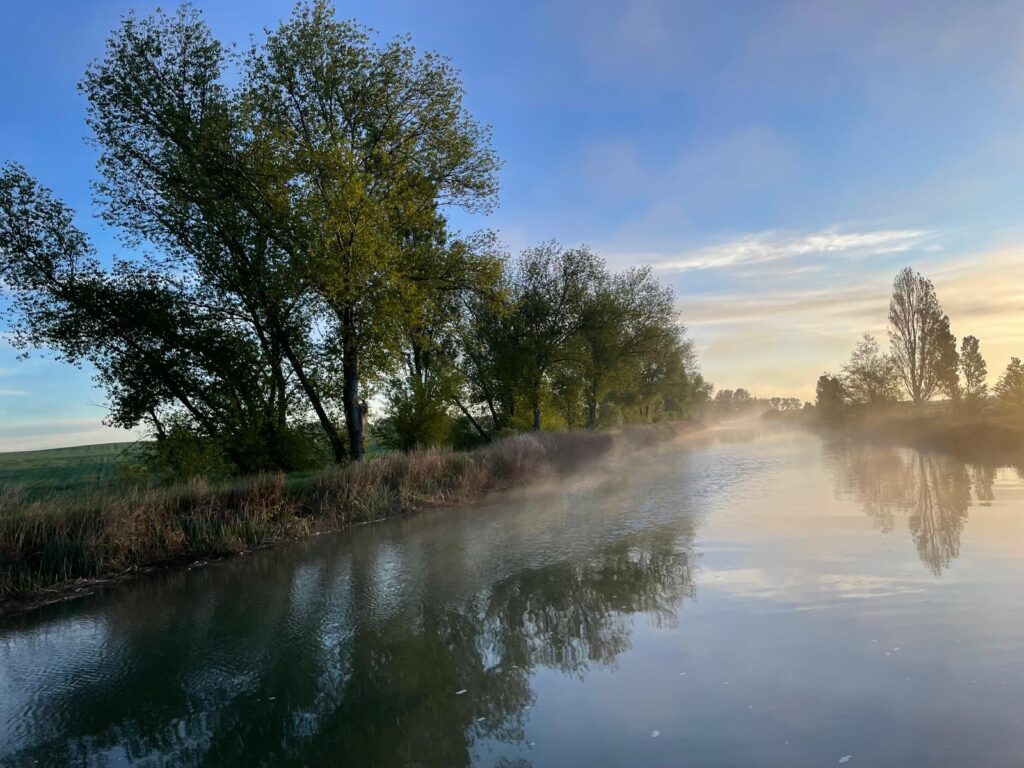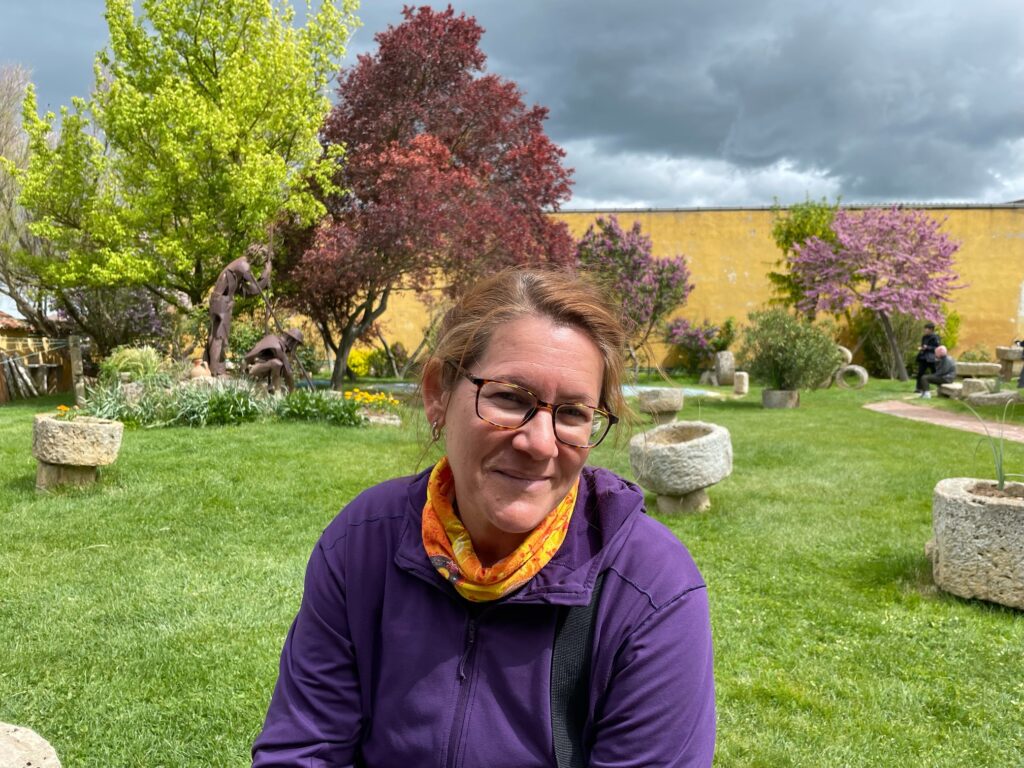Logroño to Najera, 30km
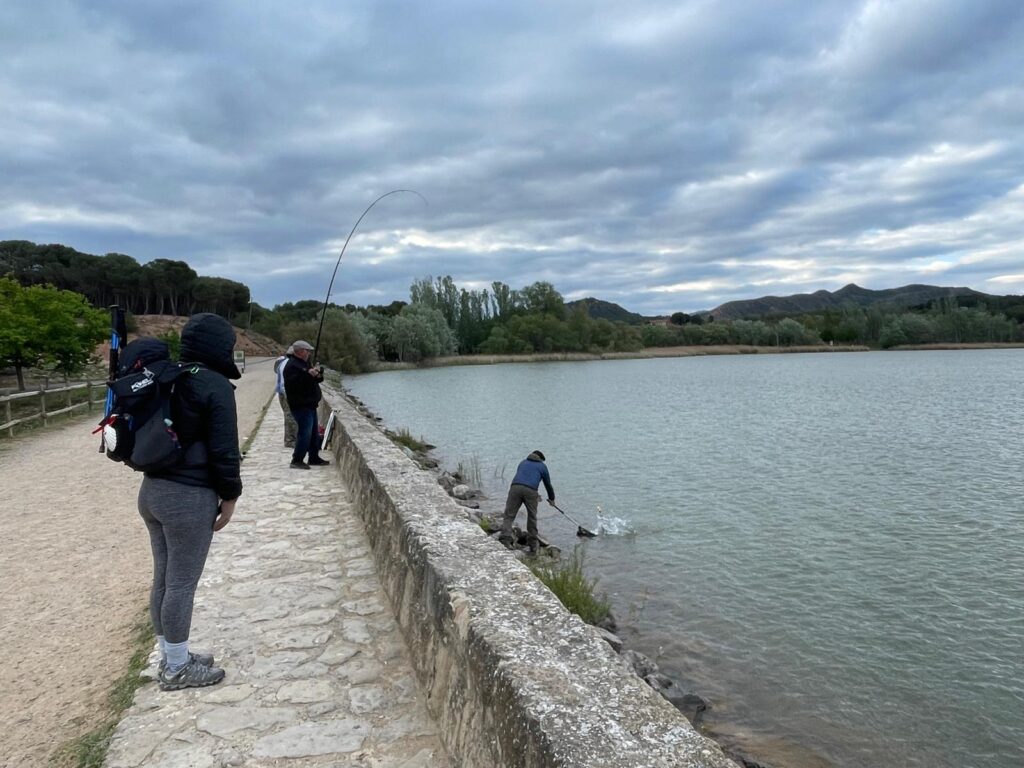
Me, “where are we?”
Jo, “We are where we are supposed to be, but I don’t know where that is”.
For eight months I’ve been studying the route and reading the blogs and watching YouTube videos on people’s experiences of the Camino, but had only concentrated on the one big climb over the Pyrenees, which even on the valley route climbed 1000 meters. I had not clocked that afterwards for two weeks there would be mountains, ‘altos’, every day; climbing 750 meters and then down, and then up, and then down, etc. Now the heights are not so extreme, maybe elevations of 350 meters or so. In the morning we check the map; “get your alto on!”, and then hope it’s at the beginning and not the end, when energy levels are not optimal.
In any event, at the end of the stage, once we’ve acquired a bed and had our credencial stamped, I slump to a bench and say the Lord’s Prayer to myself for getting me through another day. Then unlace my shoes to release my feet which immediately swell up like startled pufferfish.
We passed a big reservoir out of town, we had to stop and watch some guy try to land a trout. The funny thing was that a few meters down the path there was a short footbridge over a shallow pond with big multilingual signs warning us not to feed the carp. There were about 40 of them, some a meter long, and as soon as we walked onto the bridge they crowded about with their mouths wide open out of the water, like huge hungry chicks with whiskers and fins, hoping we were going to ignore the signs. It was one of the strangest things I’ve ever seen
There’s a Camino grapevine, which you would expect with so many pilgrims going in generally one direction but staying in one albergue or hostel, or another; meeting up in different combinations at different rest points and cafes. At our second night on the Camino, in Roncesvalles, we mentioned to the dinner table that our great aunt Lucia from Rome had completed the Camino in 23 days, when she was 63.
We met up with some of those pilgrims a week later, who could not remember our names, but knew we were Lucia’s nieces. They had been lauding her achievement ever since to the Camino at large. People we have never met, once they know we are Canadian sisters, ask if we are related to the Legend that they have heard about, The Lucia of the 23 Days.
We have also met a couple from Victoria, BC; and couldn’t believe our family live in Zeballos; ‘That’s pretty out of the way’; which is an understatement. We were stunned they’d even heard of the place. They now call out. “Hey, Zeballos!” Whenever they see us on the road.
We’ve met young misguided men deciding to carry a small fridge on their back to Santiago; they are pretty much the only ones I can outpace. But perhaps they want to camp all the way, on a camp bed and mattress, and with all their cooking gear.
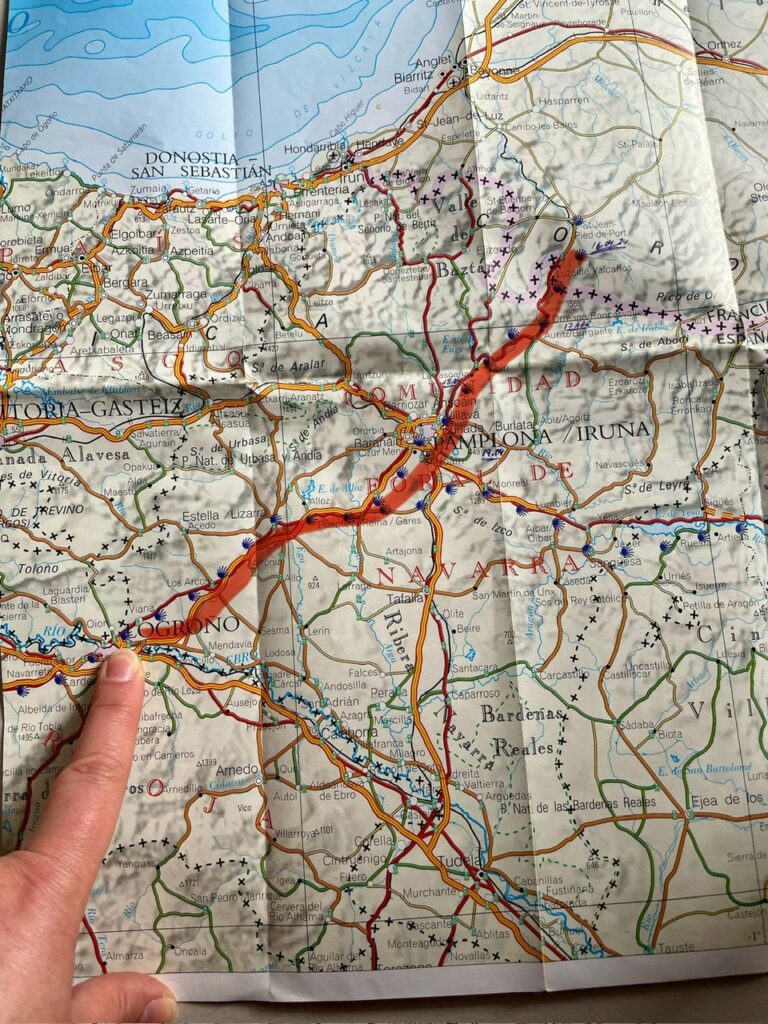
As mentioned previously, Jo got fed up with dorm life with its freezing buildings and diabolical shower facilities: and booked a private room in Najera, at an amazing rate of 30euros for the both of us. In fact, this was not a bargain. The room was nice enough, but the radiators were just for show, it was warmer outside the hostel. The bathroom facilities were shared:, there was no wifi and the guy running it was akin to the main character in Local Hero, as the reason he was only around for two hour slots was that he was also the cook and server at his restaurant 8 minutes down the street.
We ate dinner there, along with a bunch of other pilgrims, because it was open at seven, a more convenient hour than usual. We ate huddled in our sweaters and coats as central heating was not on the menu.
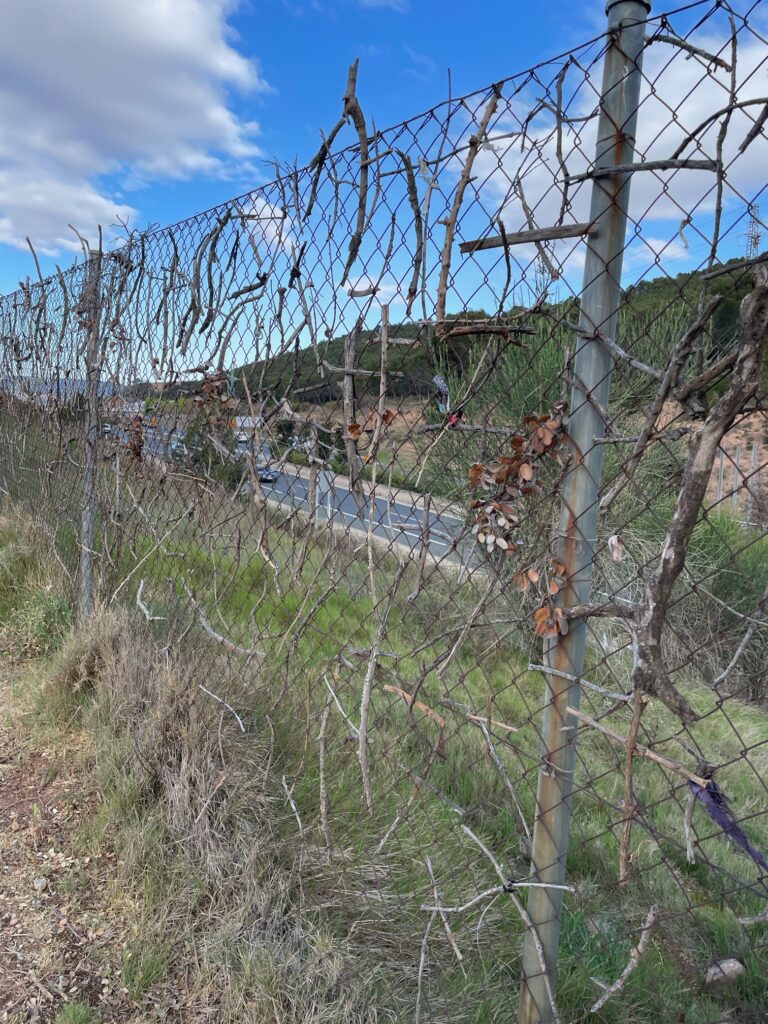
There is a section overlooking the main highway where pilgrims string a cross in the fence; the wooden crosses go for a kilometre.
Najera to Santo Domingo : 21km
My blisters are giving way to a sore ankle from favouring that side, I’m walking ok as long as I’m on painkillers. It was a shorter stage but difficult: the wind was blowing so hard that at the end of the day I looked liked I had been slapped hard.
We were fortunate to get a room at the Cistercian Abbey: The nuns were lovely, one of them originally came from Karela India, 14 years ago. I haven’t been drinking at all, except at the wine fountain of course, but that night the nuns served us a lovely meal of hake and garlic, and a full bottle of wine plonked between Jo and I. On such Holy orders I drank my half and then went to Vespers; the nuns sing beautifully.
Santi Domingo to Belorado
It was an easy flat stage. Only 22 km and I’m really slowing down, my ankle is telling me in no uncertain terms that I need a rest day. Jo and I have done 235km in ten days across some pretty challenging terrain. Jo is still going strong. She was waiting for me by a bend in the path that meets the main highway, saluting the big rigs as they bombed passed down the road, and they were honking their airhorns at her. We continue to meet and pass and be passed by the same friendly group of pilgrims. We saw our first stork and stork nest, as well as some very green lizards. The verges are mostly poppies and cornflowers; and the fields stretch out for miles until they bump into the Cantabrian Mountains which stretch 500 km and separate us from the Atlantic to the north.
We spent the night in a lovely parish albergue, a donativo (by donation), and we always donate the same amount that we would pay for a municipal Albergue. The very kind Swiss Hospitaller opened a closed off room so that I could have a bottom bunk. She is telling me to take the bus tomorrow, I can’t get up the stairs without holding on to the bannister with both hands.
Burgos Albergue – rest day
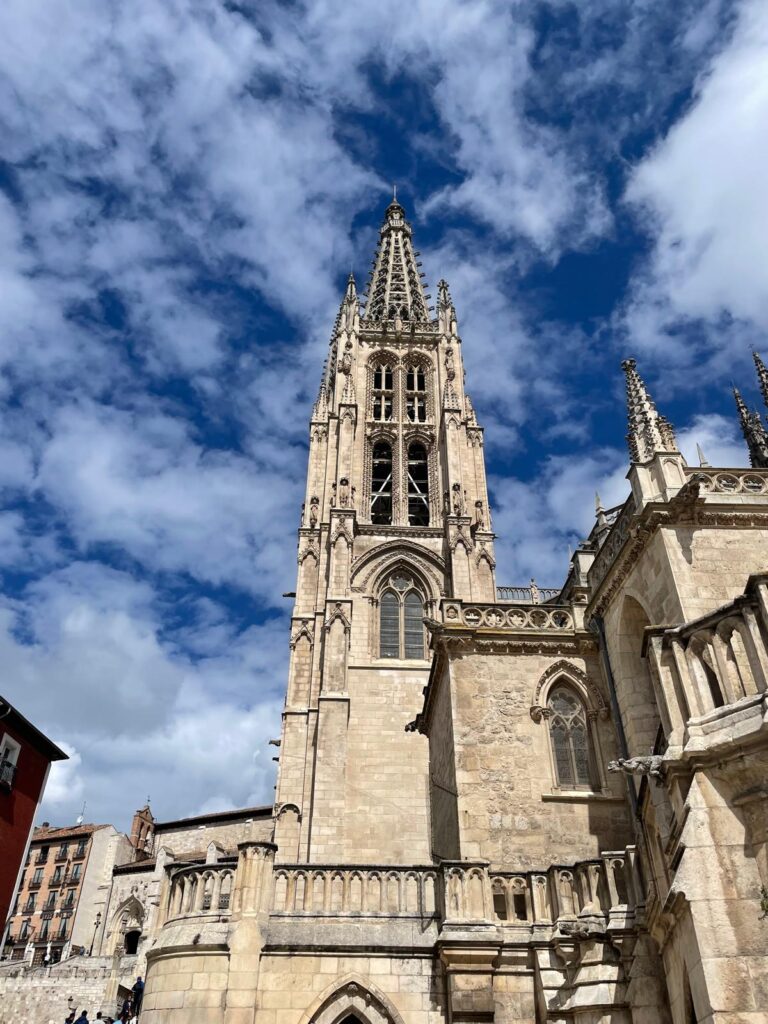
As mentioned previously, I was brow beatened into common sense and herded to the little bus stop in Belgrado 45 minutes early as the Hospitaller said it will be packed. There were two other pilgrims there already who plan, like me, to skip the day’s stage and go directly to Burgos. Both we had shared a meal with 12 days previously in Roncesvalles: one of them was on a bad burn and we tactfully left her to her thoughts. Over the next half an hour we were joined by another 22 pilgrims who had one way or another hit the wall. We all knew one another, and had developed a kind and generous community; however this was not going to stop the mad scramble for the bus, which arrived already more than half full. The underside compartment was filled with backpacks. We all fortunately got a seat; but further down the highway, groups of similar minded pilgrims could not board the bus.
The weather was filthy, and I thought of Jo battling the elements as we drove through wind and rain.
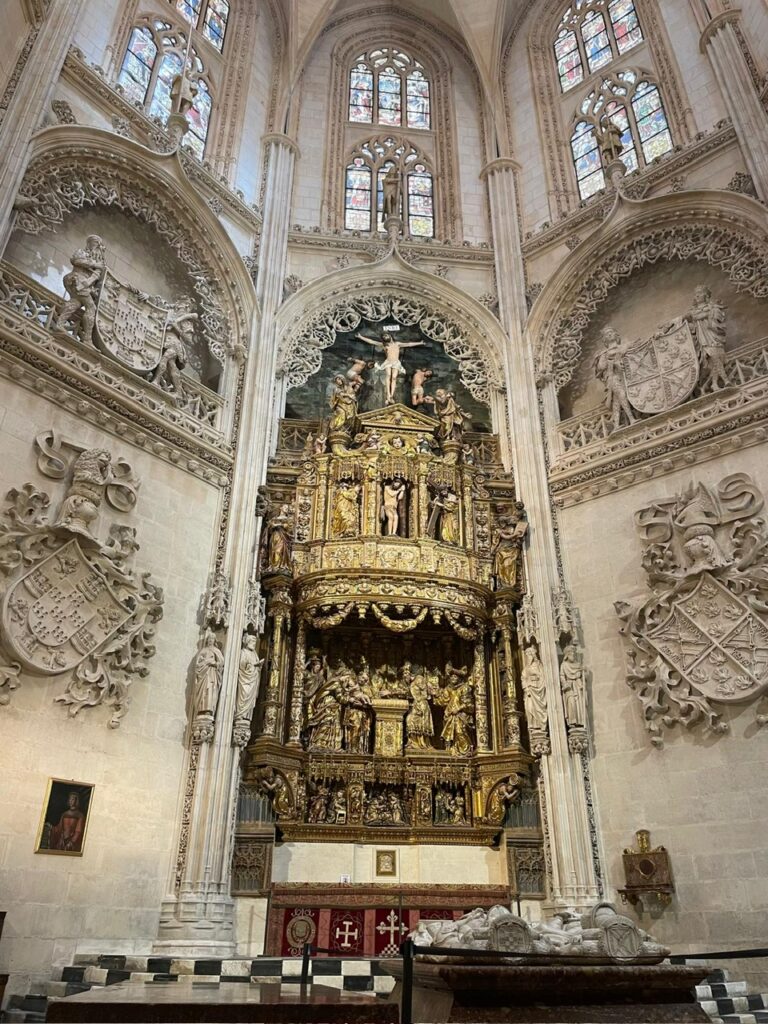
In Burgos I trudged up past the Santa Maria, Spain’s second largest cathedral. The main Albergue already had 60 backpacks lined up along the wall, waiting for opening time. It usually fills up completely an hour or two after it opens, even though it holds 144 beds.
I talked with a number of despondent pilgrims who were too injured to carry on to Santiago, and were only staying until their train or flight left.
I got a bottom bunk, fortunately, as my ankle was really bothering me; frankly I was so tired and fed up, I just emptied my ruck sack on the bed and said to the guy in the bunk above, “in the words of my father in law; I don’t know whether to sh*t, shower or shampoo”, which made about 7 pilgrims within earshot start laughing (it’s an old British military expression)
In the bunk above was a tall Italian about my age, from the southern United States. He said he had been suffering from a cold for the past week, and I gave him some medication and a Lemsip packet. Shortly afterwards he received a call; and I recognised the formula: his son was filling out paperwork for university, it needed his guarantor signature within a few days, etc; difficult as his dad was not available, so dad said to pretend his son was him, and started giving all personal info, his address, emails, insurance number, bank address, etc etc.
after the call was finished; I said I was immediately going to forget all the information he inadvertently shared with the whole dorm, except for the fact that his last name is Lepore, the same as my mother’s family, and it isn’t that common, even in Italy. I could tell he wasn’t related to my crew, he was over six feet tall and did not look like he’d been a mechanic for most of his life. He said that he was with a group of friends who were planning on walking 20 miles the next day, so was grateful for the meds. I wished him luck, but privately thought he was nuts to do such a long stint, it was more than a typical stage and a half by the guide book.
Albergues
The following day I knew that Jo would appreciate a hotel room so that on our rest day we would not have to wake up at the usual time and leave with our packs by 7.30am (which is compulsory in albergues). The hotel let me store my backpack by reception, until check in time. I then spent the morning hopping from cafe to cafe watching Jo’s approach into Burgos, which took three hours due to extensive suburbs, by watching her AirTag icon slowly get closer to me.
I met her by the cathedral and showed her the Albergue lineup of backpacks awaiting entry, and walked her right past it to the hotel, 20 metres down the street. She almost cried at the site of the room, with bathtub, duvets, little balcony overlooking the old style street and a gamba tapas bar within spitting distance.
We spent the next day visiting the Cathedral and physio. We met our Irish friend who was stressing about accommodation for the next week, as many pilgrims are: Booking.com would have you believe there isn’t a bed available anywhere between here and Leon. There’s a bit of graffiti a few days back he should be following, “Trust your instincts, not your iPhone”. We do not book and have found shelter every night.
We also met Dave again, he was the youngster who offered me his bottom bunk the previous week: His particular cross to bear was footwear; he was having such trouble with his shoes and kept buying new pairs hoping to find some that worked; he had walked a couple of days in sandals waiting for a big enough town to buy new shoes again, as the last pair still didn’t work. He was on his fourth set now.
Jojo rated her physio session and had made an appointment for me to have my ankle resolved. I spent an hour having my legs and ankles pummeled and twisted; he ended the session by looking at my feet; my toes looked like a small rat had halfheartedly chewed on them and then given up. Afterwards I asked if there was anything fundamentally wrong; he said my only problem was that I was walking the Camino, but everything was in perfect working order. I also asked him to look at my right ear, as a week previously something had stung me, which then boiled over my whole earlobe and filled with blood. “Perhaps Santiago bit you”. I’m wondering if this is a sign that I am not listening hard enough, or if the physio was just winding me up.
Burgos to Hontanos
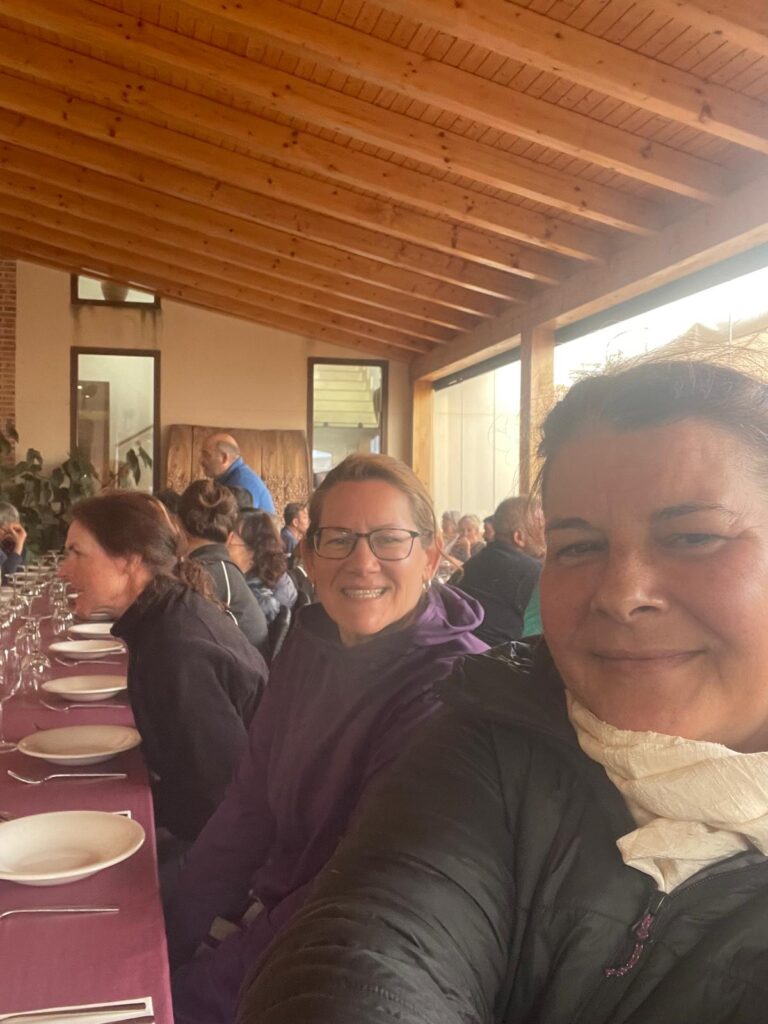
After a lovely day off, my ankle once again fit into my shoe and we were excited to be off. The stage ended at Hornillos at the 21km mark, but the weather was beautiful so we thought we’d push on thru to the ancient holy well of San Bol, which has purported mystical healing powers. Passing another small town, we ran into our Polish friend from St Jean, she was having stomach problems and feeling dizzy, but had also decided to carry on after a short rest.
A further 6km we arrived at San Bol, but the Albergue was closed and there was nothing else: the well looked refreshing, but it was too cold to take our shoes off.
“Well, this is an adventure!”, Jo chirped. This being a euphemism for, “it’s another 5km uphill to the next town, there’s no phone for a taxi, and it’s about to rain.”
So that was a Lepore 20 mile day, or 32 km – so far our longest stretch.
In Hontanos, a beautiful little town in a gully dipped in the Meseta, we saw the flags of Spain and Korea fluttered over the main square. We had a substandard pilgrims meal, and I sat across from a nice Dutch lady, she made it past the starter dish and then left, saying she felt dizzy. I checked in on her later and took her temperature, she had been sick but was not feverish, so I got an extra blanket and tucked her in. We heard her being sick thru the night but the next morning she said she would carry on regardless.
One of the drawbacks of spending weeks on the road, when it is cold and damp, and necessity requires washing your clothes every night or so, because you only have the ones you’re wearing and a spare set: is it is difficult to have anything dry in the morning. Often one is putting on slightly damp clothes before setting out in the early and cold mornings. Sometimes there are washing machines, but not usually dryers. No wonder there is a spate of head colds and illness. This pilgrimage business is not for the faint of heart.
Hontanos to Boadillo, 25km.
It was a gorgeous morning, flat open spaces and crossing ancient Roman causeways. The Meseta is beautiful, but not as flat as advertised. During a kilometre long slog up a 12% gradient, I was passed by a family including 8 year olds and their grandmother. Mind you, they weren’t carrying 20lbs on their backs. At the top was a magnificent view of the valley, with vibrant green fields and ridged by wind turbines. We were joined by team Canada from Calgary who we hadn’t seen in some time, as well as Dave of the shoes. He also was looking peakish due to this gastro bug: some say it’s the water fountains, other the food, but I think it’s just the close quarters at night and fatigue allowing a virus to throw its weight around. We battled a head wind for most of the way, bitterly cold and I’m glad Jo had bought me a snoog which covers the face. The strange thing was that the clouds did not move at all, and some of them were sitting almost on top of our heads. The cuckoos were calling in the shrubbery and we heard other strange bird calls as well.
We made it to the most iconic Albergue on the Camino, it’s featured in many of the books we’ve read. The Hospitaller insisted we go lie down and rest before we check in as we were pretty done in; he gave us bottom bunks. There was a beautiful enclosed garden, with sculptures and paintings on the walls, a large common room with a fireplace, big couches, etc. There was no other facilities in the town, so we booked the pilgrims meal, and shared big bowls of lentil soup or potage, roast chicken, battered fish or beef stew, and carafes of wine. We were at a table with a Korean tour group of 28 who had their bags and rooms organised, and were bussed over some of the more difficult stages: they had also started in St Jean.
